Last updated on Jan 13, 2022
9 Editing Tips: How to Self-Edit Your Own Writing (+ Checklist)
Tom Bromley
Author, editor, tutor, and bestselling ghostwriter. Tom Bromley is the head of learning at Reedsy, where he has created their acclaimed course, 'How to Write a Novel.'
View profile →While some projects require professional editing, there’s a lot that you can achieve through self-editing. As you become more familiar with grammar rules, good writing habits, and your unique voice.
Starting your self-edit can be pretty daunting, so we’ve put together some pointers to help you along. Before you get started, we recommend downloading the below book editing checklist to follow along.
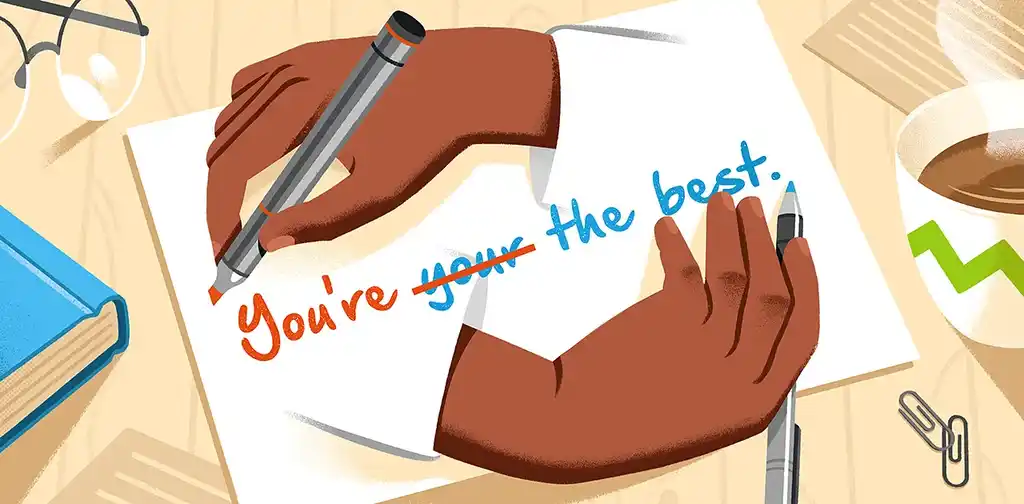
FREE RESOURCE
Get our Book Editing Checklist
Resolve every error, from plot holes to misplaced punctuation.
And without further ado, here are the 9 tips for self-editing your own writing!
- 1. Get some distance from your writing
- 2. Choose a suitable style guide
- 3. Eliminate most instances of passive voice
- 4. Cut out filler words where you can
- 5. Replace adverbs with stronger verbs
- 6. Vary your sentence structures
- 7. Be intentional with your tenses and POVs
- 8. Always read it one more time
- 9. Ask someone else to give it a proof
1. Get some distance from your writing
Whether it’s just an hour during your lunch break or a week off working on another project, stepping away between your first draft and your first edit will help you view it as a reader would. You may need to cut out some of what you thought was your best writing, so some objectivity and distance between you and your work will make this much easier. (If you want to keep your mind active without thinking about your writing, try some of these editing-related podcasts!)
Top Tip: Changing the font can help you see your work in a new light!
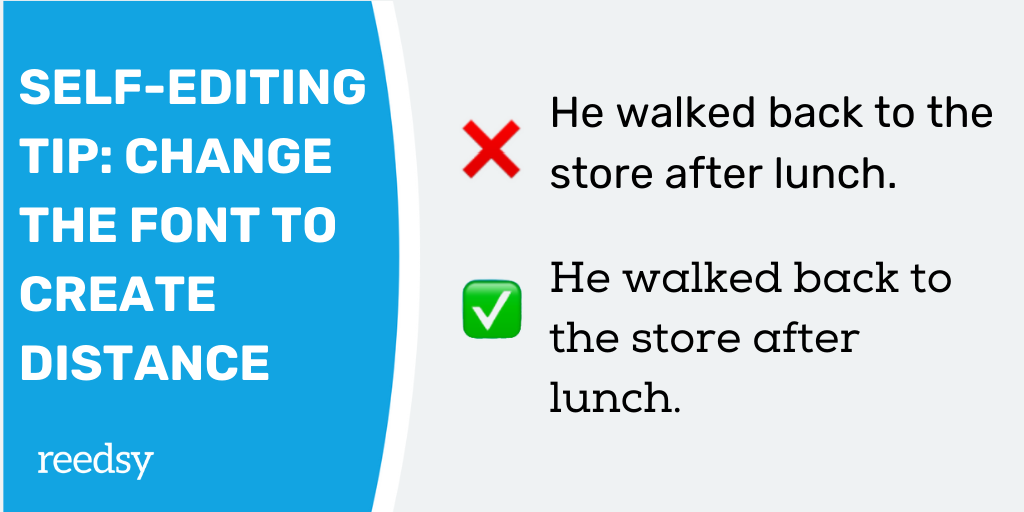
2. Choose a suitable style guide
A professional copy editor will always follow a certain style guide depending on the project. While you’re self-editing, they’ll help familiarize you with grammar rules and ensure you stay consistent throughout.
For example, the Chicago Manual of Style is typically used for novels. The AP Stylebook, on the other hand, is common among copywriters and journalists. If you’re writing something truly out-of-the-box, you may develop a stylesheet specific to the project that lays out any unique spelling and grammar rules.
Take the sentence:
He found a ten year old copy of The Hunger Games.
With Chicago, ‘ten-year-old’ would be hyphenated as a compound adjective, and the book’s title would be in italics.
He found a ten-year-old copy of The Hunger Games.
In AP, only numbers up to nine are written out in full while book titles should be in quotation marks.
He found a 10-year-old copy of “The Hunger Games”.
3. Eliminate most instances of passive voice
Knowing the difference between active and passive voice will help keep your prose strong and engaging for your readers. Writing teachers commonly recommend active voice — this means that the subject of your sentence is performing the verb’s action, making your sentence more direct and active.
The sentences in the example below mean the same thing, but the first is much more direct and packs more punch than the second.
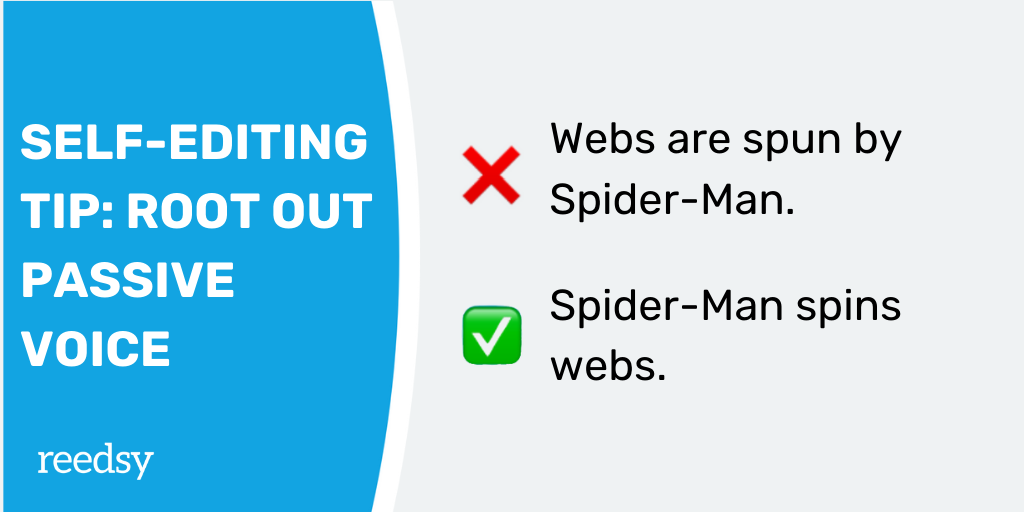
This doesn’t mean you should never use the passive voice, but keep an eye out for it and ensure you don’t overuse it.
4. Cut out filler words where you can
When we give presentations, we’re taught to avoid filler words like ‘like,’ ‘okay,’ or ‘so’; this rule also applies to writing. Fillers crowd your sentences without adding any extra meaning. Just like overusing passive voice, they reduce the impact of your work and tax your readers, so they are pretty much always found on editing checklists suggesting ways to finetune your writing.
Reading out loud or using text-to-speech functions often helps you hear unnecessary words. You can even ask someone to read your work to you, giving you a second pair of eyes before you move on to the next stage in the editing process.
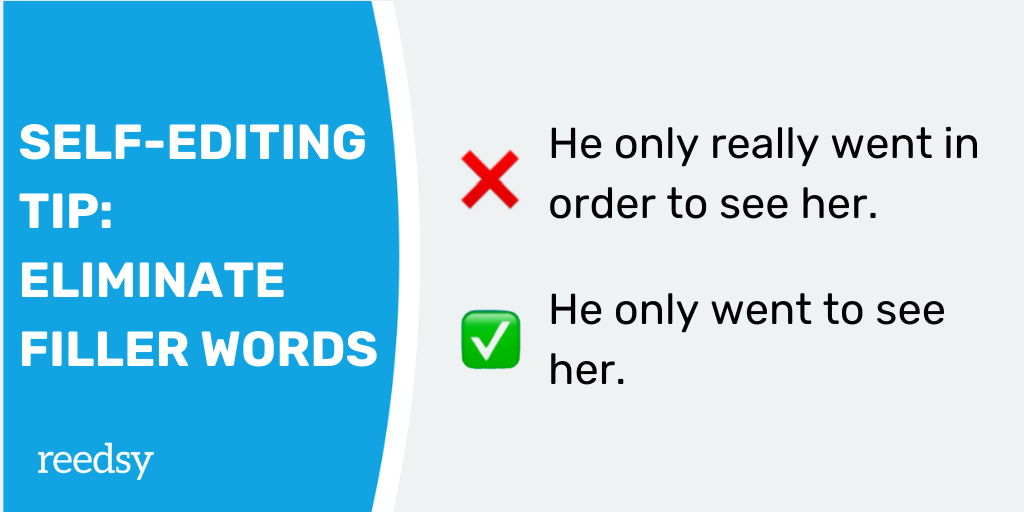
5. Replace adverbs with stronger verbs
Adverbs are another type of word that often weakens your writing. In his memoir On Writing, Stephen King recommends removing them entirely, claiming they’re just a quick-fix solution for when you can’t quite find the right verb. Instead, seek out that perfect verb which will make your writing more dynamic.
In dialogue-heavy passages, you'll find that adverbs are commonly overused:
‘She said quietly’ → ‘she whispered’
‘He said loudly’ → ‘he shouted’
Of course, you don’t have to follow King’s advice to the letter, but it’s worth watching for ‘ly’ words as you re-read and edit your work.
6. Vary your sentence structures
Too many short sentences can make your prose look like one long list, while too many long sentences become confusing. Varying your sentence structures and finding a balance is difficult but well worth the effort. Keep your eye out for consecutive sentences that start the same way — they can have the unintended effect of sounding like you’re droning on and on and on.
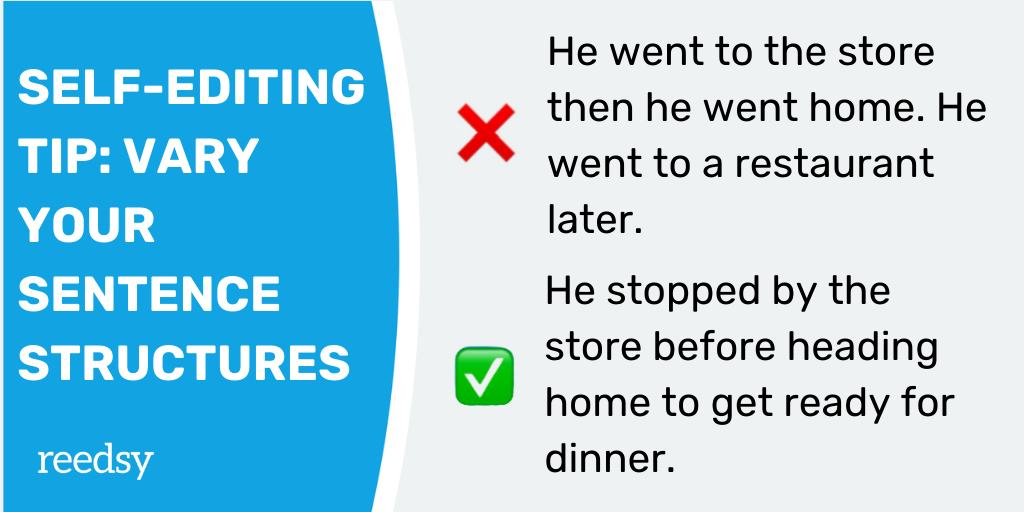
Once again, it can help to read your work aloud — if you find yourself struggling for breath, it could mean that you’ve hit upon a sentence that’s too long. See if turning your run-on sentences into two (or more) shorter ones would be better.
For example:
Carrie told Alan about the time she went to Europe and returned a stranger’s wallet perched on the edge of Rome’s Trevi fountain only to be rewarded with an invitation to a dinner party that night, hosted by the delighted owner.
You may wish to split this mouthful up into:
Carrie told Alan about her time in Europe. She had returned a stranger’s wallet that she found perched on the edge of Rome’s Trevi fountain. Delighted, the owner invited Carrie to a dinner party he was hosting that night.

7. Be intentional with your tenses and POVs
Work out whether past or present tense is best for your work and from which point of view you’re telling it. If you inadvertently switch between tenses and viewpoints, you’ll confuse many of your readers. Of course, some stories are purposefully written across multiple timelines or perspectives and if this is the case with yours, make sure you’re absolutely certain you’re using the right one at the right time.
‘Tom goes to the cinema. He saw the new Brad Pitt film.’
‘Tom went to the cinema. He saw the new Brad Pitt film.’
Try mapping out your story as a whole, in chronological order, from the perspective of an omniscient narrator, and then work out which parts will use each tense or point of view.
8. Always read it one more time
When you think you’ve done all you can, put your work down and take another break from it — again, this can be anything from a couple of hours to a few weeks. When you’re ready, go back and read through it one last time.
With this newfound distance, you’re almost sure to spot mistakes you missed the first time. You could find anything from spelling mistakes to chronological inconsistencies that you didn’t catch when focusing on some of the ‘bigger picture’ issues.
9. Ask someone else to give it a proof
True objectivity is hard to achieve, try as you might to create distance between yourself and your work. Roping in a friend or family member to read it through is a great last step. They’ll spot mistakes you didn’t see and question things that might only have made sense to you, the all-knowing author. Plus, they’re likely to deliver the feedback without being too harsh.
If you have the budget, you can also hire an editor to professionally edit your manuscript for you.

Perfect your book with a professional edit
The best developmental editors, copy editors, and proofreaders are on Reedsy. Sign up for free and meet them.
Learn how Reedsy can help you craft a beautiful book.
Editing your own work isn’t easy, whether you've got an editing checklist to help you or not. Finishing your first draft is already a huge accomplishment and it can be hard to admit that something you’re so proud of isn’t perfect. An editing checklist can't beat a professional edit, but starting with a self-edit is an empowering way to start the process and will only make your work better in the long run.









